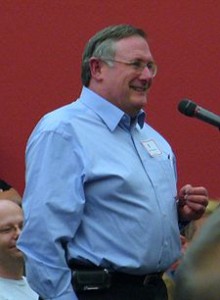
Aaron Huslage has been hacking on Internet technologies since 1987.
Aaron has been a thought leader in the Internet industry since 1993. His greatest talent lies in communicating highly technical information to those who aren't highly technical.
He constantly researches new and emerging technologies and the latest system management techniques with an emphasis on very large-scale, low-cost, simple mobile, wireless and public interest communications.
Aaron is a member of the organizing committee for O'Reilly's Emerging Telephony Conference. He is intimately familiar with Sun Microsystems offerings, and heavily committed to the concept of Open Everything including OpenBTS.
He has managed large server farms for Microsoft, Major League Baseball and has consulted with some of the largest companies on the Internet. He founded Aidphone Disaster Relief, supported Amsoft Identity Systems (Equals.com), and has been engaged with Red Hat Software, IBM Global Services, and Collective Technologies, among others.
Continue reading “Who's Who in Collective Intelligence: Aaron Huslage”








